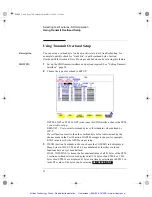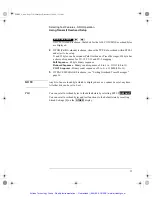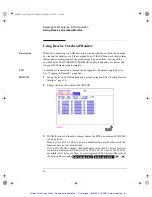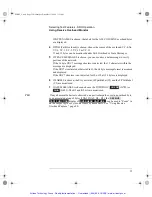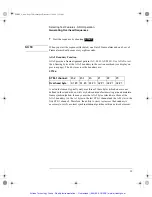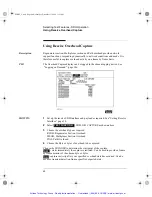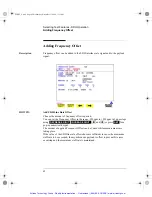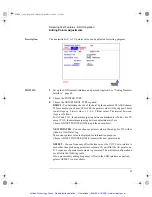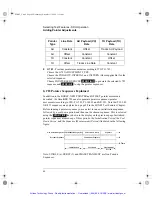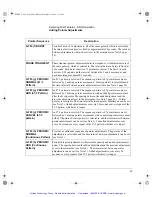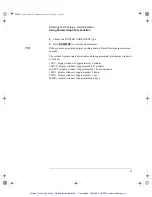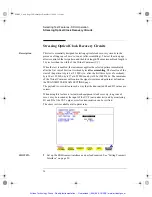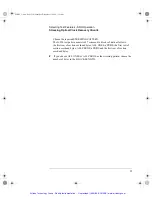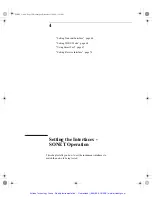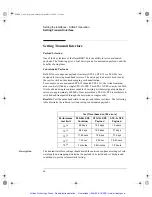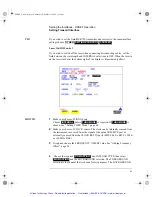
46
Selecting Test Features - SDH Operation
Adding Pointer Adjustments
4
G.783 - Provides pointer movements according to ITU-T G.783:
Choose the G.783 ADJUSTMENT TYPE.
Choose the POLARITY, INTERVAL and PATTERN (where applicable) for the
selected sequence.
Choose POINTER SEQUENCES
to generate the selected G.783
sequence and
to stop the pointer sequences.
G.783 Pointer Sequences Explained
In addition to the BURST, NEW POINTER and OFFSET pointer movements
described, the OmniBER 720 can also generate pointer sequences (pointer
movements) according to ITU-T G.783, T1.105.03 and GR-253. Note that T.105.03/
GR-253 sequences are explained on page 88 in the SONET Test Features Chapter.
Before running a pointer sequence you can elect to run an initialization sequence,
followed by a cool down period, and then run the chosen sequence. This is selected
using the
key shown in the display on the previous page. Initialized
pointer sequences are made up of three periods: the Initialization Period, the Cool
Down Period, and the Sequence (Measurement) Period, illustrated in the following
figure:
Note: SINGLE (e), BURST (f) and PHASE TRANSIENT are Non Periodic
Sequences.
Pointer
Type
Line Rate
AU Payload (VC)
Rate
TU Payload (TU)
Rate
AU
Constant
Offset
Tracks AU Payload
AU
Offset
Constant
Constant
TU
Constant
Constant
Offset
TU
Offset
Tracks Line Rate
Constant
START INIT
STOP INIT
START INIT
Initialization Sequence
Non Periodic Sequence
Periodic Sequence
No Pointer Activity
Initialization
Continuous Sequence
Sequence
T
im
e
Cool Down
Measurement
Period
SONET_Usr.bk Page 46 Wednesday, December 13, 2000 11:11 AM
Artisan Technology Group - Quality Instrumentation ... Guaranteed | (888) 88-SOURCE | www.artisantg.com

